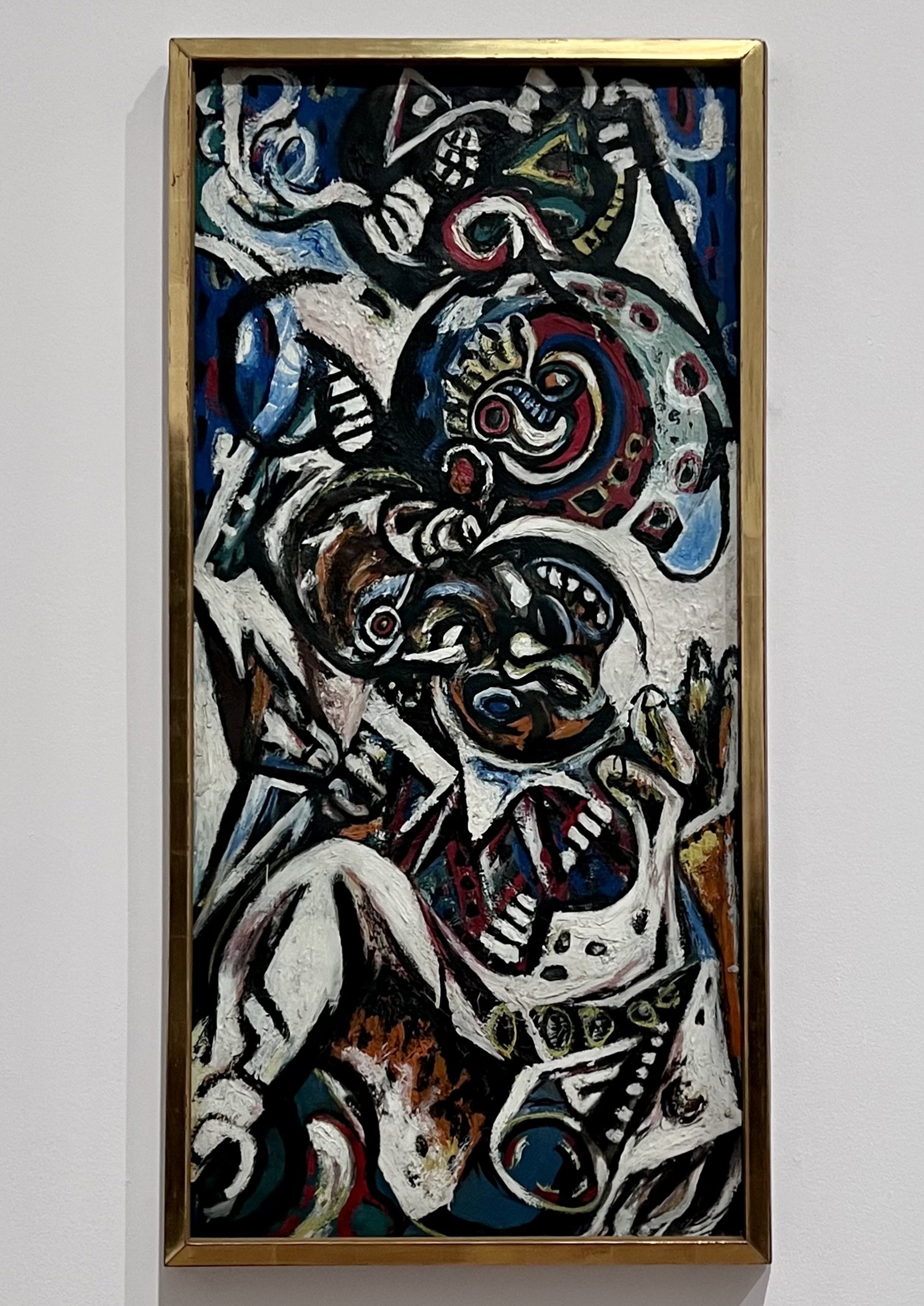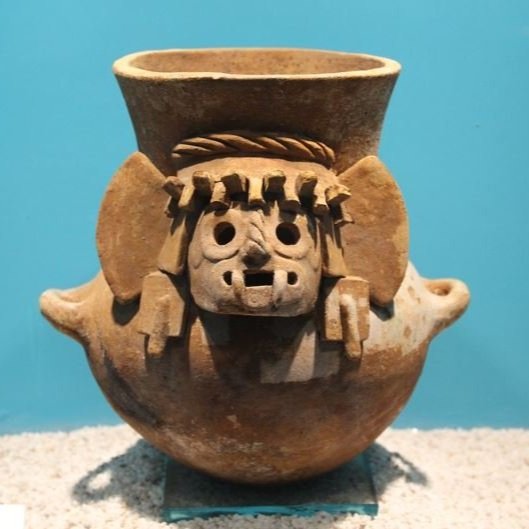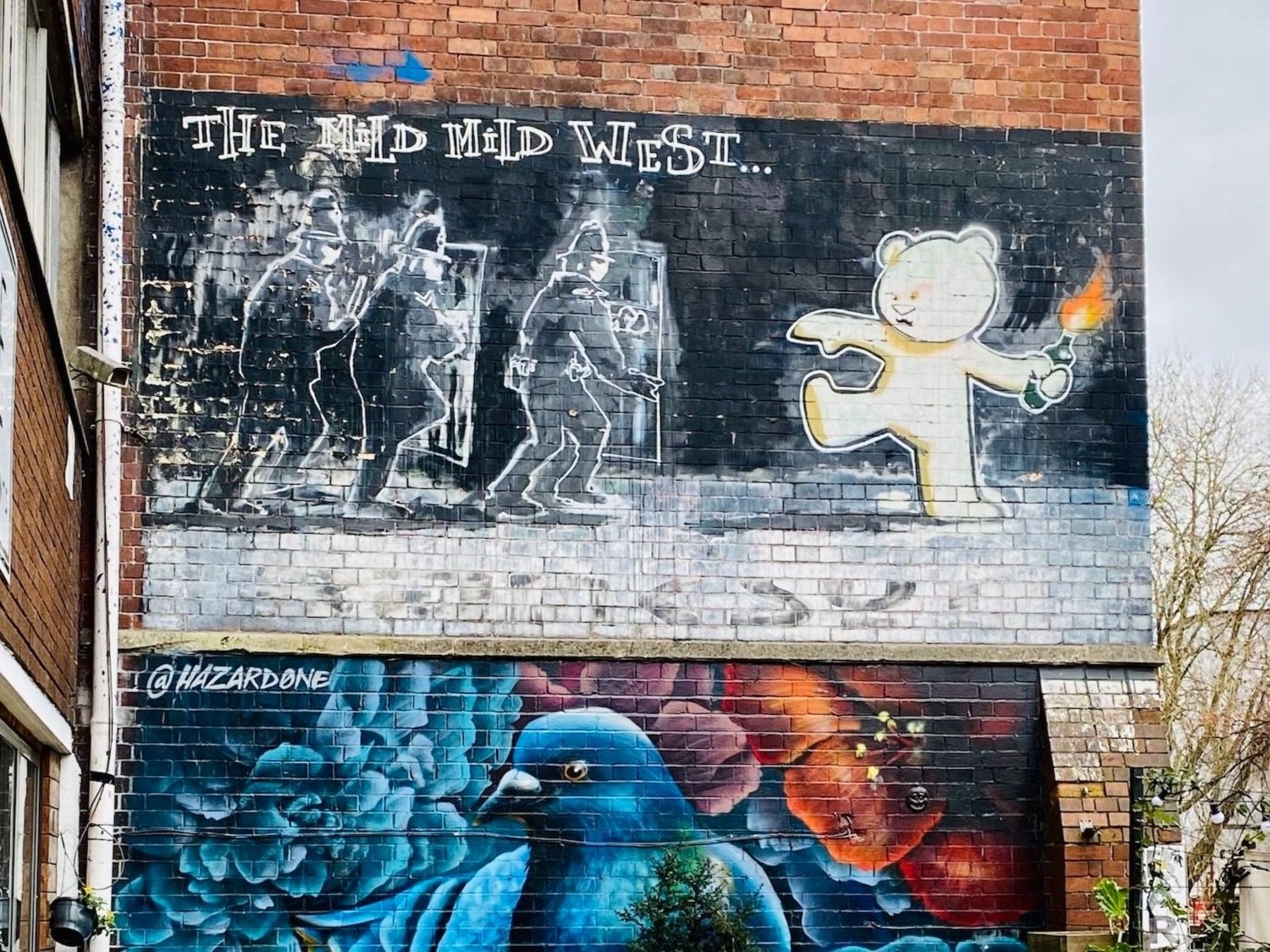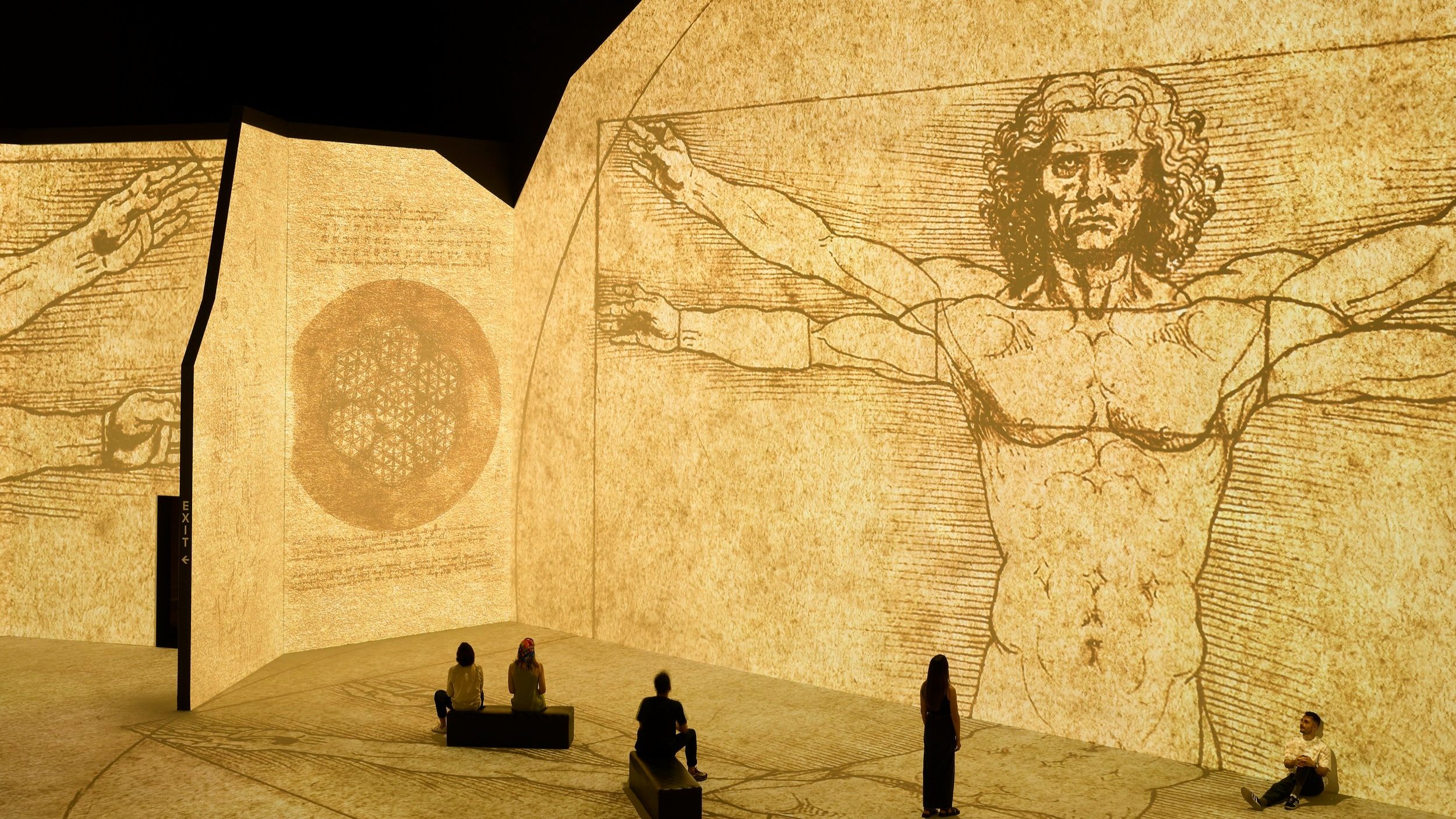Contemporary Art vs Modern Art
Modern Art - ‘The Little Deer’ by Frida Kahlo
In the ever-evolving landscape of art history, two distinct movements stand out: modern art and contemporary art.
While often used interchangeably, these terms represent unique periods with their own characteristics, influences, and contributions to the art world.
In this article, I will explore the differences between modern art and contemporary art in more detail. I will examine the historical context of each period, discuss the key characteristics of each movement, and highlight some of the most influential artists from each era.
Table of Contents
Major Art Movements of the Modern Period
Characteristics of Contemporary Art
Major Art Movements of the Contemporary Period
Famous Artists of the Contemporary Period
Similarities between Contemporary Art and Modern Art
The Differences Between Contemporary Art and Modern Art
How Modern Art and Contemporary Art Have Influenced Each Other
My Final Thoughts: The Ongoing Legacy of Modern and Contemporary Art
Characteristics of Modern Art
Modern Art - ‘Self Portrait, 1889’ by Vincent van Gogh
Modern art is characterised by its rejection of traditional artistic conventions and its emphasis on experimentation and innovation. Modern artists sought to break free from the constraints of the past and create a new kind of art that reflected the changing world around them. Some of the key characteristics of modern art include:
Rejection of traditional forms and techniques: Modern artists rejected the prevailing academic styles of the 19th century, which they saw as outdated and restrictive. They experimented with new forms of expression, such as abstraction, collage, and assemblage.
Emphasis on experimentation and innovation: Modern artists were constantly experimenting with new materials, techniques, and ideas. They were not afraid to break the rules and challenge traditional notions of what art could be.
Focus on the individual artist's expression: Modern artists placed a strong emphasis on the individual artist's unique perspective and experience. They believed that art should be a personal expression of the artist's inner world.
Exploration of new subject matter: Modern artists explored a wide range of new subject matter, including urban life, industrialisation, and the subconscious mind. They also drew inspiration from non-Western art and culture.
Emphasis on the creative process: Modern artists were often more interested in the process of creating art than in the finished product. They believed that the act of creation was as important as the final work of art.
Major Art Movements of the Modern Period
Abstract Expressionism - Photo of ‘Birth’ c.1941 by Jackson Pollock at Tate Modern, London © Pollock - Krasner Foundation, Inc.
Some of the major art movements of the Modern Period included:
Fauvism (1905-1908): Fauvism was a short-lived but influential movement that emerged in France in the early 20th century. Fauvist artists, such as Henri Matisse and André Derain, used bright, non-naturalistic colours to create a sense of emotional intensity and spontaneity.
Cubism (1907-1914): Cubism was a revolutionary movement that emerged in France in the early 20th century. Cubist artists, such as Pablo Picasso and Georges Braque, broke objects down into geometric forms and represented them from multiple perspectives simultaneously.
Expressionism (1905-1920): Expressionism was a movement that emerged in Germany in the early 20th century. Expressionist artists, such as Edvard Munch and Wassily Kandinsky, used exaggerated forms and colours to express their inner emotions and psychological states.
Futurism (1909-1914): Futurism was a movement that emerged in Italy in the early 20th century. Futurist artists, such as Umberto Boccioni and Giacomo Balla, celebrated the speed, energy, and dynamism of the modern world.
Constructivism (1913-1930): Constructivism was a movement that emerged in Russia in the early 20th century. Constructivist artists, such as Vladimir Tatlin and Alexander Rodchenko, believed that art should be useful and functional. They created abstract sculptures and paintings that were often used in industrial design and architecture.
Surrealism (1924-1940): Surrealism was a movement that emerged in France in the 1920s. Surrealist artists, such as Salvador Dalí and René Magritte, explored the subconscious mind and the world of dreams. They created works of art that were often strange, fantastic, and irrational.
Abstract Expressionism (1940-1960): Abstract Expressionism was a movement that emerged in the United States in the 1940s. Abstract Expressionist artists, such as Jackson Pollock and Mark Rothko, created large-scale paintings that were characterised by their gestural brushwork and emotional intensity.
These are just a few of the many art movements that emerged during the modern period. Modern art was a time of great experimentation and innovation, and artists were constantly pushing the boundaries of what art could be.
Famous Modern Artists
Modern Art - ‘Self-Portrait on the Borderline Between Mexico and the United States’ by Frida Kahlo
Some of the most famous modern artists include:
Pablo Picasso (1881-1973): Picasso was a Spanish artist who is considered one of the most influential artists of the 20th century. He was a co-founder of Cubism and also experimented with other styles, such as Surrealism and Expressionism. Some of his most famous works include Les Demoiselles d'Avignon (1907) and Guernica (1937).
Vincent van Gogh (1853-1890): Van Gogh was a Dutch artist who is known for his vibrant and emotional paintings. He suffered from mental illness throughout his life, and his work often reflected his inner turmoil. Some of his most famous works include The Starry Night (1889) and Sunflowers (1888).
Henri Matisse (1869-1954): Matisse was a French artist who is known for his use of bright colours and simplified forms. He was a leading figure in the Fauvism movement. Some of his most famous works include Blue Nude (1907) and The Dance (1909).
Wassily Kandinsky (1866-1944): Kandinsky was a Russian artist who is considered one of the pioneers of abstract art. He believed that art should be a purely spiritual experience, and his paintings often evoke a sense of transcendence. Some of his most famous works include Composition VII (1913) and White on White (1919).
Salvador Dalí (1904-1989): Dalí was a Spanish artist who is known for his surrealist paintings. He often depicted strange and fantastic images in his work, and he was also known for his eccentric personality. Some of his most famous works include The Persistence of Memory (1931) and The Dream (1931).
Frida Kahlo (1907-1954): Kahlo was a Mexican artist who is known for her self-portraits and paintings of Mexican culture. She often depicted her own physical and emotional pain in her work, and she is considered one of the most important artists of the 20th century. Some of her most famous works include Self-Portrait with Thorn Necklace and Hummingbird (1940) and The Two Fridas (1939).
Jackson Pollock (1912-1956): Pollock was an American artist who is considered one of the pioneers of abstract expressionism. He created large-scale paintings by pouring and dripping paint onto the canvas. Some of his most famous works include Number 1A, 1948 (1948) and Blue Poles (1952).
Characteristics of Contemporary Art
Contemporary Art - ‘Campbell's Soup Cans’ By Andy Warhol
Contemporary art is characterised by its focus on current societal issues, its use of new technologies and media, and its blurring of the boundaries between different art forms.
Contemporary artists often engage with pressing social, political, and environmental issues, challenging traditional notions of what art can be and do.
They employ a wide range of materials and techniques, from traditional painting and sculpture to video, performance art, and digital media.
Some of the key characteristics of contemporary art include:
Focus on current societal issues: Contemporary artists often engage with pressing social, political, and environmental issues in their work. They use art to raise awareness of important issues, challenge injustices, and promote social change.
Use of new technologies and media: Contemporary artists are constantly experimenting with new technologies and media. They use video, performance art, digital media, and other new technologies to create works of art that are both innovative and engaging.
Blurring of the boundaries between different art forms: Contemporary artists often blur the boundaries between different art forms. They create works of art that combine elements of painting, sculpture, photography, video, and performance art.
Emphasis on the creative process: Contemporary artists are often more interested in the process of creating art than in the finished product. They believe that the act of creation is as important as the final work of art.
Major Art Movements of the Contemporary Period
Performance Art by Marina Abramović - ‘Balkan Baroque’ at The Royal Academy, London 2023
Some of the major art movements of the contemporary period include:
Pop Art (1950s-1960s): Pop Art emerged in the United Kingdom and the United States in the 1950s. Pop artists, such as Andy Warhol and Roy Lichtenstein, drew inspiration from popular culture, advertising, and the mass media.
Minimalism (1960s-1970s): Minimalism emerged in the United States in the 1960s. Minimalist artists, such as Donald Judd and Agnes Martin, created works of art that were characterised by their simplicity, geometric forms, and limited use of colour.
Conceptual Art (1960s-1970s): Conceptual Art emerged in the United States and Europe in the 1960s. Conceptual artists, such as Joseph Kosuth and Sol LeWitt, believed that the idea behind a work of art was more important than the physical object itself.
Performance Art (1960s-present): Performance art emerged in the United States and Europe in the 1960s. Performance artists, such as Marina Abramović and Chris Burden, create works of art that involve their own bodies and often take place in public spaces.
Famous Artists of the Contemporary Period
Some of the most famous artists of the contemporary period include:
Andy Warhol (1928-1987): Warhol was an American artist who is considered one of the most important figures in Pop Art. He is known for his iconic works of art, such as Campbell’s Soup Cans (1962) and Marilyn Diptych (1962).
Roy Lichtenstein (1923-1997): Lichtenstein was an American artist who is also known for his Pop Art works. He is known for his paintings and prints that are based on comic book panels.
Donald Judd (1928-1994): Judd was an American artist who is considered one of the pioneers of Minimalism. He is known for his sculptures that are made of simple geometric forms, such as cubes and boxes.
Agnes Martin (1912-2004): Martin was an American artist who is also known for her Minimalist works. Her paintings are characterised by their simple, grid-like compositions and limited use of colour.
Joseph Kosuth (1945-present): Kosuth is an American artist who is considered one of the pioneers of Conceptual Art. He is known for his works of art that are based on ideas and concepts, rather than on physical objects.
Sol LeWitt (1928-2007): LeWitt was an American artist who is also known for his Conceptual Art. He is known for his instructions-based art, in which he provides written instructions for others to follow in order to create works of art.
Marina Abramović (1946-present): Abramović is a Serbian-born performance artist who is known for her intense and often physically demanding performances. She is considered one of the most important figures in performance art.
Chris Burden (1946-2015): Burden was an American performance artist who is known for his dangerous and often self-inflicted performances. He is considered one of the most important figures in performance art.
Similarities between Contemporary Art and Modern Art
Similarities between contemporary art and modern art include:
Rejection of traditional forms and techniques: Both modern and contemporary artists have rejected the prevailing artistic conventions of their time and embraced experimentation and innovation.
Emphasis on the individual artist’s expression: Both modern and contemporary artists have placed a strong emphasis on the individual artist’s unique perspective and experience. They believe that art should be a personal expression of the artist’s inner world.
Exploration of new subject matter: Both modern and contemporary artists have explored a wide range of new subject matter, including urban life, industrialisation, the subconscious mind, and current societal issues.
Emphasis on the creative process: Both modern and contemporary artists have often been more interested in the process of creating art than in the finished product. They believe that the act of creation is as important as the final work of art.
The Differences Between Contemporary Art and Modern Art
Differences between contemporary art and modern art include:
Time period: Modern art is generally considered to be the art of the late 19th century and early 20th century, while contemporary art is the art of the mid-20th century to the present day.
Use of technology: Contemporary artists are more likely to use new technologies and media in their work, such as video, performance art, and digital media.
Blurring of boundaries: Contemporary art is more likely to blur the boundaries between different art forms, such as painting, sculpture, photography, and video.
Focus on current societal issues: Contemporary art is more likely to focus on current societal issues, such as social justice, environmentalism, and globalisation.
Global perspective: Contemporary art is more global in its outlook, with artists from all over the world contributing to the movement.
In addition to these differences, contemporary art is often seen as being more conceptual and less focused on aesthetics than modern art. Contemporary artists are more likely to be interested in exploring ideas and concepts than in creating beautiful objects.
It is important to note that these are just general trends, and there are many exceptions to these rules. Some contemporary artists still work in traditional mediums and styles, and some modern artists were ahead of their time in their use of technology and conceptual ideas.
How Modern Art and Contemporary Art Have Influenced Each Other
Photo of the painting ‘Wilhelm Uhde’ by Pablo Picasso in The National Gallery, London
Modern art and contemporary art have influenced each other in a number of ways.
The use of abstraction: Modern artists, such as Wassily Kandinsky and Piet Mondrian, pioneered the use of abstraction in art. This opened up new possibilities for artistic expression, and contemporary artists have continued to explore and expand upon the use of abstraction in their work. For example, contemporary artist Gerhard Richter uses abstraction to create paintings that explore the nature of reality and perception.
The blurring of the boundaries between different art forms: Modern artists, such as Marcel Duchamp and Kurt Schwitters, began to blur the boundaries between different art forms, such as painting, sculpture, and collage. This led to the development of new genres of art, such as installation art and performance art, which have been widely adopted by contemporary artists. For example, contemporary artist Kara Walker uses installation art to explore themes of race, history, and identity.
The focus on current societal issues: Modern artists, such as Pablo Picasso and Diego Rivera, began to use their art to address current societal issues, such as war, poverty, and social injustice. This led to the development of socially engaged art, which is a major trend in contemporary art. For example, contemporary artist Ai Weiwei uses his art to critique the Chinese government and to promote social justice.
The use of new technologies and media: Modern artists, such as László Moholy-Nagy and Naum Gabo, began to experiment with new technologies and media, such as photography, film, and radio. This led to the development of new genres of art, such as video art and digital art, which have been widely adopted by contemporary artists. For example, contemporary artist Bill Viola uses video art to explore themes of birth, death, and transcendence.
In addition to these specific examples, modern art has also had a more general influence on contemporary art. Modern artists challenged traditional notions of what art could be and do, and their work opened up new possibilities for artistic expression. Contemporary artists have been inspired by the work of modern artists, and they have continued to develop and expand upon the ideas of modern art. As a result, modern art has played a major role in shaping the development of contemporary art.
My Final Thoughts: The Ongoing Legacy of Modern and Contemporary Art
Modern and contemporary art have revolutionised the way we think about art. These movements have challenged traditional notions of what art can be and do, and they have opened up new possibilities for artistic expression.
The legacy of modern and contemporary art is still unfolding and they continue to inspire and challenge artists today, for example:
Modern and contemporary art have helped to redefine the role of the artist in society. Modern and contemporary artists have challenged the traditional view of the artist as a solitary genius. They have shown that art can be a collaborative process, and that it can be used to address important social and political issues.
Modern and contemporary art have expanded our understanding of what art can be. Modern and contemporary artists have shown that art is not limited to traditional mediums and techniques. They have created works of art that are interactive, immersive, and site-specific. They have also used new technologies and media to create works of art that challenge our traditional notions of what art is.
Modern and contemporary art have made art more accessible to a wider audience. Modern and contemporary art have helped to break down the barriers between art and everyday life. They have made art more accessible to a wider audience, and they have helped to create a more inclusive and diverse art world.
The legacy of modern and contemporary art is one of innovation, experimentation, and social engagement. These movements have had a profound impact on the way we think about art, and they continue to inspire and challenge artists today.
I hope you have found this article about painting contemporary and modern art useful. If you would like to get in touch you can email me at sarahransomeart@gmail.com, I would love to hear your thoughts.












